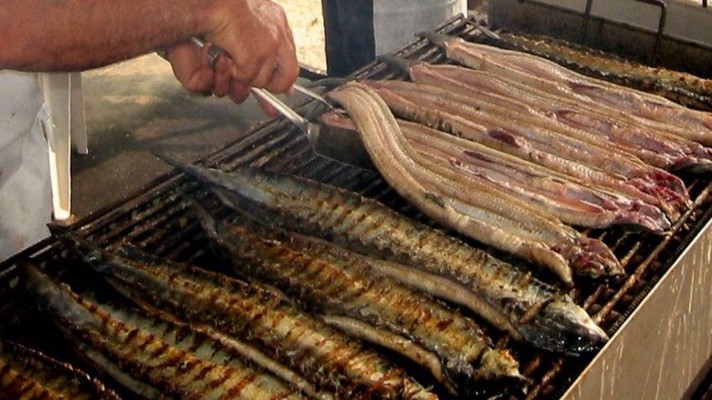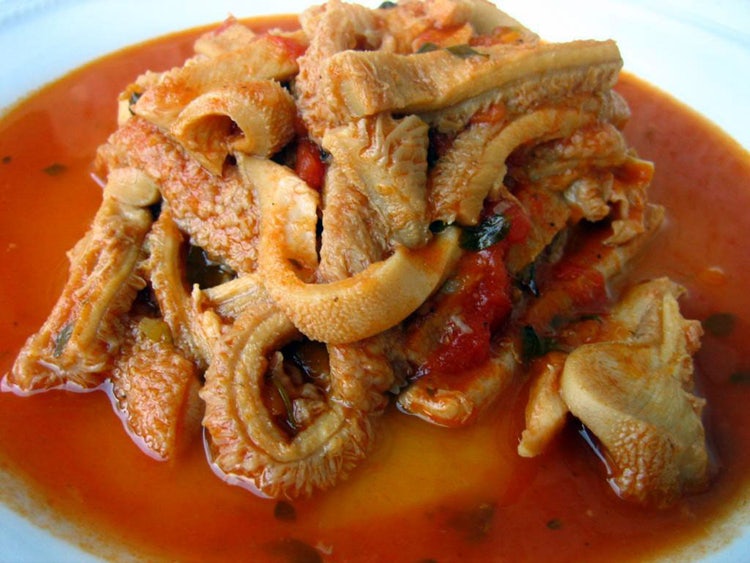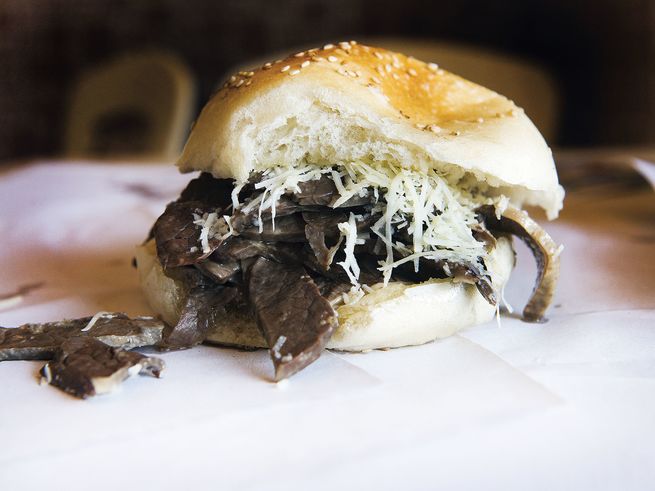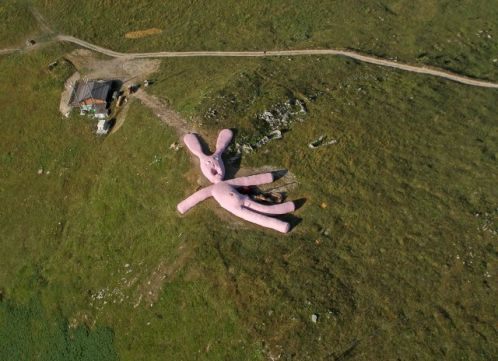Weird Things You Must See (And Try) in Italy
Weird Things You Must See (And Try) in Italy

Italy is famous for many well-known things: classical art, opera, gelato, Rome, espresso, the Colosseum, the Vatican and of course, cycling! But there is so much more to see and try that’s a little “”off”” and certainly not part of the mainstream travel trails. Here are our top picks for the best awesomely weird, pleasantly wacky, and delightfully unusual dishes to try and places to see in Italy!
Weird, Cool and Crazy Food
Cotechino and Zampone in Modena
‘Tis the season for some great pork fat! In the area around Modena (Emilia Romagna), there are myriad inventive uses for pork. Cotechino and zampone are two favorites. These sausages are often served for Christmas and New Years accompanied by lentils and potatoes, and as a cozy winter meal. Cotechino is made by grinding pork meat with wine and spices including cloves, nutmeg, cinnamon, and pepper and stuffing it into natural casing. Zampone is a similar mixture of ground pork, but stuffed into the thicker skin of the trotters instead.
![cotechino-4112947142[1000]x[417]780x325](https://cdn2.hubspot.net/hubfs/414695/Unusual%20Italy/cotechino-4112947142%5B1000%5Dx%5B417%5D780x325.jpg)
A visit to the foodie mecca town of Modena (known mostly for it’s balsamic vinegar) fits in nicely before or after our Barolo and Truffles tour in Piedmont.
Eel from Chioggia
Eels are found in abundance in the waters of the Adriatic Sea and are a popular dish in many regions of Italy. In fact, they are so well-loved that there are eel festivals in some towns! They can be grilled, baked, or fried, and are commonly eaten as street food as well as in restaurants. Below, grilled eel at the Sagra Dell’Aguilla Festival in Comacchio, a town near Chioggia.

A visit to Chioggia works in perfectly after any one of of tours in the Veneto or Piedmont.
Lampredotto & Trippa Fiorentina
Street food tends to be on the funkier end of a culture’s cuisine, and Florence is no different. Trippa is tripe, referring generally to cow stomach, and lampredotto is specifically the fourth and final stomach. While tripe is common in many regions of Italy and many other cultures as well, lampredotto is exclusively Florentine. They are usually sauteed with onion, carrot, celery, and herbs before simmering in a rich tomato sauce and scooped onto a crunchy bun. As you’re tromping around Tuscany, keep an eye out for trippai and lampredottai, the small stands selling these specialties.

Try these two tasty Tuscan specialities on any one of our Tuscany Tours.
Maggot infested cheese in Sardegna (yes, it’s true!!)
A controversial delicacy, casu marzu is a sheep’s milk cheese made on the island of Sardinia. There are many delicious Sardinian sheep cheeses, but when making casu marzu, the top of the semi-cured cheese is cut off to allow flies to lay eggs in the curd. Once the eggs hatch into maggots, the cheese is ready to eat. Don’t believe it? Watch this video short video of traditional production and Gordon Ramsay giving it a try!
Dormice in Calabria
Over 3,000 years ago, the ancient Romans, Gauls, and Etruscans feasted on dormice, eaten as a snack as well as stuffed with pork, nuts, and spices and served at banquets. Surprisingly enough, the strong-flavored dormouse has stood the test of time and continues to be popular in Calabria. Despite the ban on hunting, thousands are trapped in the region every year.
You can learn all about this cool, historical dish and more on our Bike Across Southern Italy bike tour.
Cow spleen in Umbria & Sicily
If it’s edible, someone, somewhere, has surely figured out a delicious way of eating it. Rather than letting one of the stranger pieces of meat go to waste, Palermitani (Palermo’s residents) have turned cow spleen into a favorite street food, frying it in lard alongside slices of lung, piling it into a fluffy sesame seed bun, and topping it with fresh ricotta and shreds of caciocavallo cheese. The locals call these sandwiches pani ca’meusa. It’s a strong, distinctive flavor, but sandwich vendors can barely keep up with devoted fans during the lunchtime rush.

Any one of our Sicily trips would be a great opportunity to test out this unique street food.
Fried brains
Everything tastes good fried, right? The people of Florence, where fried brains are a specialty certainly think they pass the test. Cervelli fritti or frittelle di cervello are creamy and rich with a strong flavor, and are often topped with just black pepper or a splash of lemon juice and eaten simply. Need convincing? They’re incredibly high in healthy Omega-3 fatty acids!

Give this smart dish a try during any one of our Tuscany Tours!
Unusual, Strange and Fascinating Places
Museo Della Tortura – Medieval Torture Museums
Five charming towns and villages around Italy are home to the five locations of a museum with a rather dark theme – torture through the ages. Instead of simply horrifying visitors with ancient torture instruments, they use it as an opportunity to address ongoing human rights abuses around the world, reminding us that human beings are still being tortured today and that respect for opinions and beliefs different from our own is fundamental for a peaceful world. The museums are located in Siena, San Gimignano, Volterra, Lucca, and Montepulciano.
Wax Anatomical Museums
This creepy genre of museum dates back several hundred years. La Specola Anatomical Collection in Florence was opened in 1775 and was very popular with the public, as well as scientists and artists. In addition to the extremely detailed wax models of human bodies and body parts, the museum contains some taxidermied animals, including now-extinct species. Similar museums are located in Siena and Bologna.
Check out the curious torture and wax museums during any of our Tuscany trips!
The Monsters of Bomarzo – Parco dei Mostri
A walk through this park was designed to be the opposite of ‘a walk in the park.’ It was commissioned in 1552 by Prince Pier Francesco Orsini who had come home from war reeling from the shock of battle, imprisonment, and the death of his friend, and soon after reaching home, the death of his wife. Winding paths take you past massive, unsettling stone sculptures – a screaming face, a giant ripping another giant in half, a war elephant, a huge fish head. It was a dramatic break from the Renaissance style of the time, and was loved by surrealists such as Dalí who visited it hundreds of years later.

The Tarot Garden – Il Giardino dei Tarocchi
French sculptor Niki de Saint Phalle worked for nearly 20 years to create 22 brightly colored mosaic sculptures representing the figures on tarot cards. The huge pieces are arranged in an expansive garden on the coast of Tuscany. The artist was inspired by Barcelona’s Park Güell, but wanted to add a deeper meaning by depicting the Major Arcana, the suit of cards within the tarot deck that symbolize deep aspects of life.

These two unique parks are perfect places to check out at the end of our Bike Across Italy bike tour!
Giant Pink Bunny – in Piedmont
For reasons difficult to fathom, in 2005 an art collective from Vienna assembled a giant pink stuffed rabbit in the Northern Italian (Piedmont) town of Artesina. As it was filled with hay bales, the rabbit had mostly decomposed by 2016. Visitors were encouraged to climb and jump on the sculpture, which was expected to last until 2025.
The pink bunny challenge: see if you can find this amazing site before or after our fantastic bike tour in Piedmont.

